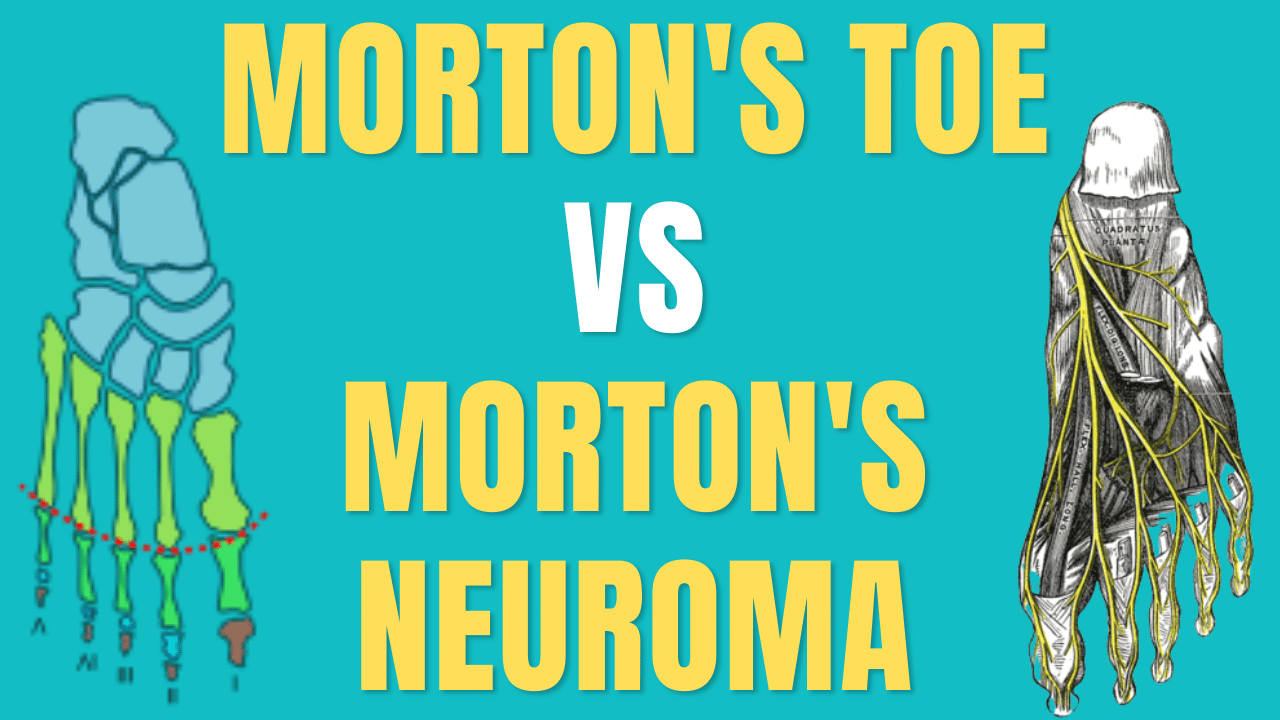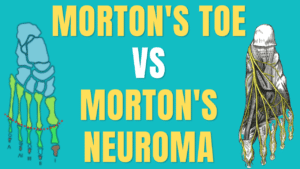Your feet carry your weight and help you move through your day, but when they're in pain, it can be difficult to do even the simplest activities. Two common foot conditions that can cause pain and discomfort are Morton's toe and Morton's neuroma. They're similar in name, but quite different in what they are. Here's what you need to know about Morton's toe vs Morton's neuroma.
Table of Contents
Morton's Toe vs Morton's Neuroma: What's The Difference?
Morton's toe and Morton's neuroma are two distinct foot conditions that are often confused because of their similar names.
What Is Morton's Toe?
Morton's toe refers to a structural abnormality in which the second toe is longer than the big toe. This can cause an uneven distribution of weight on the foot, leading to discomfort or pain in the ball of the foot.
What Is Morton's Neuroma?
On the other hand, Morton's neuroma is a condition in which the nerves between the toes become irritated and inflamed, causing pain or discomfort in the ball of the foot or toes. It most commonly affects the nerve between the third and fourth toes.
What's The Difference Between Morton's Toe vs Morton's Neuroma?
While the two conditions can have similar symptoms, they have different causes and treatments.
Morton's toe is a structural abnormality and cannot be cured, but symptoms can be managed through conservative treatments.
Morton's neuroma, on the other hand, is caused by repetitive pressure or irritation on the nerve and can usually be treated with conservative measures which we'll further discuss below.
Morton's Toe
As previously mentioned, Morton's toe is a condition where the second toe is longer than the big toe. It is also known as Morton's Foot Syndrome or Greek Toe.
Is Morton's Toe More Common In People Of Greek Descent?
The name Greek toe came from the the finding of the second toe being longer than the first in many Greek statues, but Morton's toe is found in people of different ethnicities as well.
Is Morton's Toe Rare?
Morton's toe is not necessarily rare, but it is less common than a foot with a longer big toe.
About 10-20% of the population has Morton's toe.
Morton's toe can be inherited though, and it tends to run in families. However, it can also occur due to a developmental abnormality.
What Problems Can Morton's Toe Cause?
Morton's Toe can cause an uneven distribution of weight on the foot, leading to discomfort or pain in the ball of the foot or the toes.
It can also lead to calluses or corns on the second toe, where it comes into contact with the shoe.
The uneven distribution of weight can also lead to issues such as plantar fasciitis or metatarsalgia.

Is There A Way To Get Rid Of Morton's Toe?
Morton's toe is a structural, bony abnormality, so the only way to get rid of Morton's toe would be to have the bones in your foot surgically shortened.
That's not a good idea!
Morton's toe is a relatively harmless condition, whereas foot surgery would likely worsen the function of your foot and possibly result in more pain.
While there's no cure for Morton's Toe, there are ways to alleviate the discomfort or pain it causes.
Treatment For Morton's Toe
Wearing shoes with a wide toe box or using orthotics inserts can help redistribute weight on the foot and reduce pressure on the ball of the foot.
Additionally, having physical therapy to improve the mobility in your ankle and calves can help.
Morton's Neuroma
Morton's neuroma is a condition where the nerves between the toes become irritated and inflamed, causing pain or discomfort. It most commonly affects the nerve between the third and fourth toes where the medial and lateral plantar nerves join together.
Women are more likely to develop Morton's neuroma than men. It also becomes more common in middle-age because people can start to develop fallen arches as they age.
What Causes Morton's Neuroma?
The exact cause of Morton's neuroma is unknown.
However, it's believed to be caused by repetitive pressure or irritation on the plantar nerves.
Possible causes of Morton's neuroma include:
- wearing tight or narrow shoes
- wearing high heels
- participating in high-impact activities such as running or jumping
What Are The Symptoms Of Morton's Neuroma?
The symptoms of Morton's neuroma can include a burning or sharp pain in the ball of the foot or toes, numbness or tingling in the toes, or the feeling of a small pebble or lump under the foot.
How Is Morton's Neuroma Diagnosed?
Morton's neuroma can be diagnosed by a podiatrist through a physical exam and by taking X-rays or an MRI of the foot. A podiatrist may also perform a nerve conduction study to assess nerve function.
How Is Morton's Neuroma Treated?
The best treatment for Morton's neuroma depends on the severity of the condition and the factors contributing to it.
Often changing footwear or using orthotics may help alleviate symptoms.
However, it's best to get evaluated by a physical therapist who experienced in treating foot problems such as Morton's neuroma in order to find out:
- WHY the nerves in your foot are being compressed in the first place
- WHAT you can dot to stop the nerve compression
- HOW LONG it will take for you to get better
- HOW to keep the problem from coming back
Need Treatment For Morton's Neuroma?
Tap the button below to request an appointment with one of our specialists.






